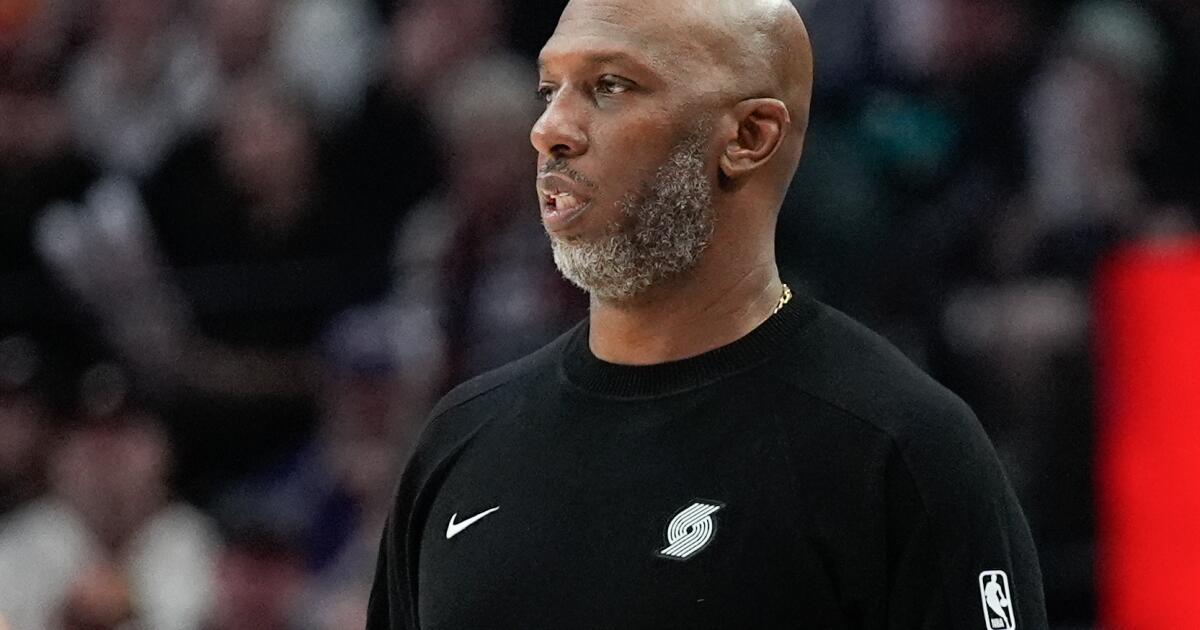4 wildest NBA gambling allegations: Cheating poker chip trays, card-reading glasses, X-rays and the mob
Poker chip trays that can secretly read cards.
Glasses that can detect card markings.
Rigged underground games run by the New York mafia.
NBA figures exchanging insider information as part of illegal betting schemes.
These are some of the wild allegations filed in two criminal complaints this week by federal prosecutors in one of the most sweeping and sensational betting scandals in recent professional sports history.
At the heart of one of the cases, prosecutors charged several figures using private insider NBA information, such as when players would sit out, to help others profit in leveraged bets online.
But the allegations go far deeper, including a connection to the Lakers, the mob and more.
Here are four key allegations:
1. High-roller games with high-tech cheating
Portland Trail Blazers coach Chauncey Billups, who played with the Clippers for two seasons and later was a member of Clippers coach Ty Lue’s staff before earning the Trail Blazers head coaching job, is charged with rigging underground poker games that three of New York’s Mafia families backed, authorities said.
Billups and Damon Jones, a retired NBA player, according to one of the two indictments revealed Thursday, were used to attract wealthy players to the games and were referred to as “Face Cards.” But according to the federal indictment, the two were part of the cheating teams. In exchange for taking part in the games, the “Face Cards” received part of the winnings.
The teams, according to court filings, used rigged shuffling machines that read deck cards and predicted which player on the table would have the best poker hand and relayed that information to someone, referred to as the operator. That person then relayed that information to one member of the cheating team on the table, known as the “Quarterback,” or “Driver,” according to court filings.
In some cases, the cheating teams used poker chip trays that could secretly read the cards on the table. In other cases, players used glasses that could detect special markings on the cards.
U.S. Attorney Joseph Nocella of Brooklyn said at a press conference said the defendants used “special contact lenses or eyeglasses that could read pre-marked cards” and tables that “could read cards face down on the table … because of the X-ray technology.”
He cited “other cheating technologies, such as poker chip tray analyzers, which is a poker chip tray that secretly reads cards using a hidden camera,.”
“Anyone who knows Chauncey Billups knows he is a man of integrity; men of integrity do not cheat and defraud others,” Chris Heywood, Billups’ attorney, said in a statement Tuesday night. “To believe that Chauncey Billups did what the federal government is accusing him of is to believe that he would risk his Hall-of-Fame legacy, his reputation, and his freedom. He would not jeopardize those things for anything, let alone a card game.”
2. Alleged mob ties
The games in the New York area were backed by three of New York’s organized crime families: the Bonanno, Gambino and Genovese Mafia families, authorities said. According to the complaint, at least a dozen of the 31 defendants were associates or members of those three families.
Among those named in the indictment was Joseph Lanni, identified as a captain in the Gambino crime family. Known as “Joe Brooklyn,” Lanni was also named as a defendant in a 2023 racketeering, extortion and witness retaliation indictment, where members and associates of the Gambino family were accused of trying to take control of New York’s carting and demolition industries.
Last week, Lanni pleaded guilty to one count of racketeering conspiracy, according to court records.
3. A tip about LeBron James
Federal prosecutors allege that between December 2022 and March 2024, the defendants , used inside information to defraud bettors, including which players would be sitting out games and when players would “pull themselves out of games early for purported injuries or illnesses.”
Damon Jones, a retired NBA player and friend of LeBron James is accused of inside information for sports betting related to the Lakers and specifically “Player 3,” a prominent NBA player.
Although the indictment does not name the player — the date referenced in 2023 when the player sat out matches when James sat out against the Milwaukee Bucks due to ankle soreness. According to the indictment, Jones, a friend of James, profited from the non-public information.
“Get a big bet on Milwaukee tonight before the information is out!” Jones texted an unnamed co-conspirator, according to the indictment. “[Player 3] is out tonight.”
On Thursday, the Lakers declined to comment on the investigation. A person close to LeBron James told The Times that the Lakers star didn’t know that Jones was allegedly selling injury information to gamblers placing bets. Neither James or the Lakers have been accused of any wrongdoing.
3. A ‘shady’ injury
According to the indictment, when Terry Rozier was playing for the Hornets, he told others he was planning to leave the game early with a “supposed injury,” allowing others to place wagers that raked in thousands of dollars, New York Police Commissioner Jennifer Tisch said.
Rozier and other defendants allegedly provided that information to other co-conspirators in exchange for either a flat fee or a share of betting profits.
Another game involving Rozier that has been in question was played a day earlier, on March 23, 2023, between the Hornets and the New Orleans Pelicans. Rozier played the first 9 minutes and 36 seconds of that game — and not only did not return that night, citing a foot issue, but also did not play again that season.
Posts still online from March 23, 2023, show that some bettors were furious with sportsbooks that evening when it became evident that Rozier was not going to return, with many turning to social media to say that something “shady” had gone on regarding the prop bets involving his stats for that night.
